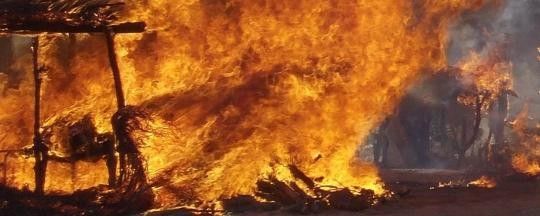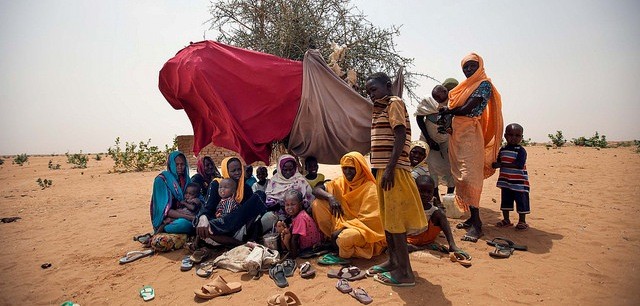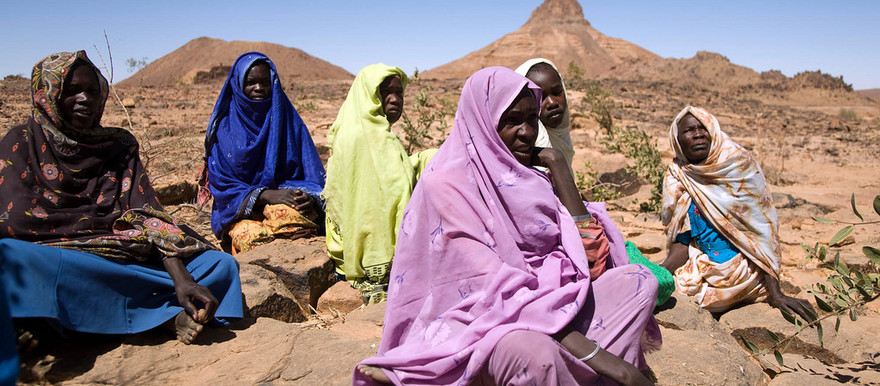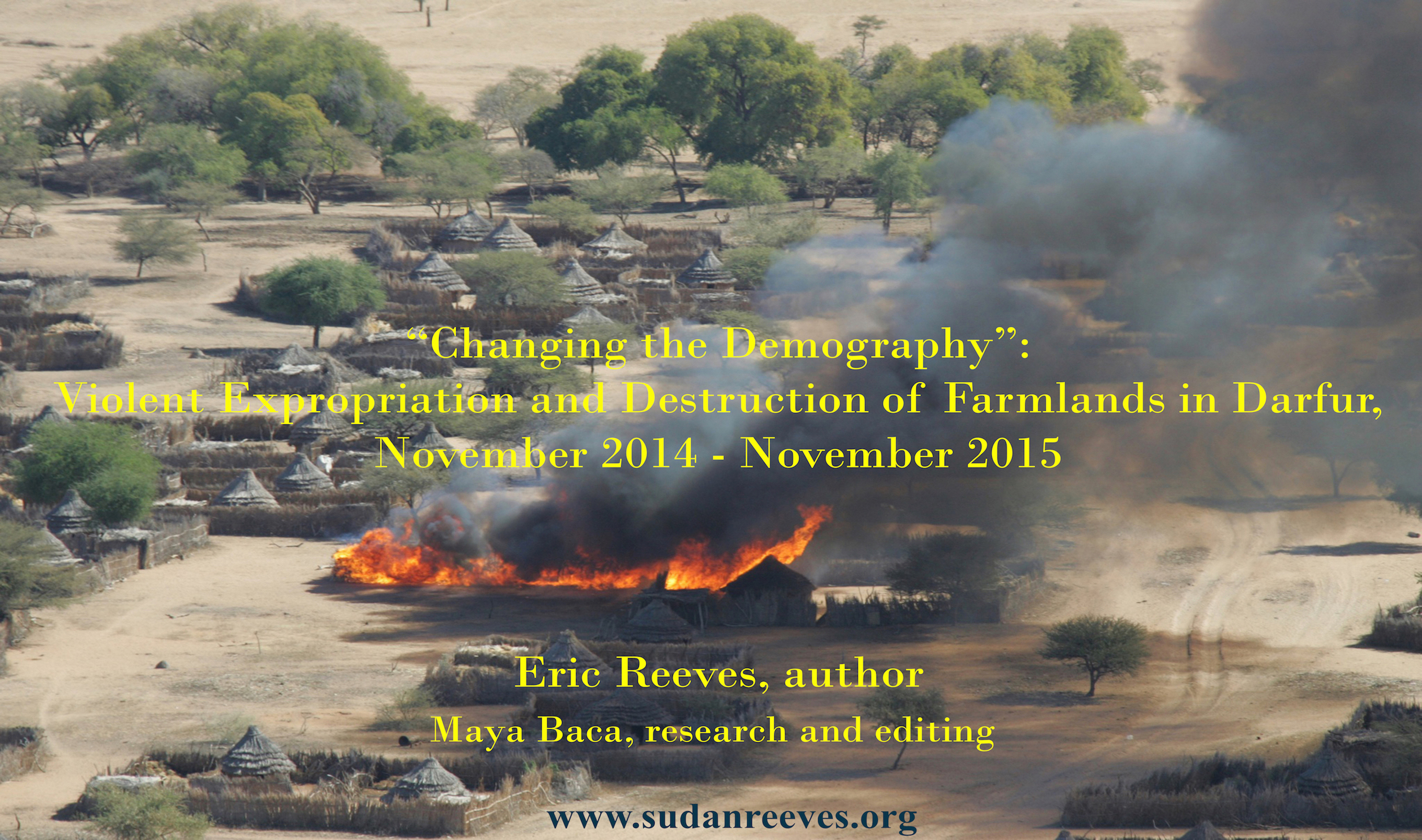Assaults on Camps for the Displaced in Darfur: History Makes Clear They Will Increase
Eric Reeves | August 27, 2017 | http://wp.me/p45rOG-25W
Two headlines from Radio Dabanga today tell us a great deal about the future of camps for displaced persons inside Darfur. The UN Security Council resolution gutting the UN/African Union “hybrid” Mission in Darfur (June 30, 2017), along with the impending permanent lifting of U.S. economic sanctions on the NIF/NCP regime in Khartoum (October 2017), provide the backdrop for what will certainly be a dramatic increase in attacks by militia forces and regular Sudan Armed Forces (SAF) on camps for the displaced:
• Darfur displaced commemorate 2008 ‘Kalma camp massacre’ | Radio Dabanga | August 27, 2017 | NYALA | https://www.dabangasudan.org/en/all-news/article/darfur-displaced-commemorate-2008-kalma-camp-massacre
On Friday, thousands of displaced people commemorated the ninth anniversary of the ‘Kalma camp massacre.’ In August 2008, a group of militiamen and members of the paramilitary Central Reserve Police (Abu Tira) raided Kalma camp for the displaced near Nyala, capital of South Darfur. (See below)
• Militiamen surround South Darfur camp, shoot student | Radio Dabanga | August 27, 2017 | NIERTETI | https://www.dabangasudan.org/en/all-news/article/militiamen-surround-south-darfur-camp-shoot-student
A university student was shot at Nierteti’s Northern Camp in Central Darfur on Thursday. Speaking to Radio Dabanga, a camp elder reported that militiamen began firing into the air over the Northern Nierteti Camp for the displaced on Thursday evening. “Abdelwahab Hasan Hamid was seriously hit by bullets, and had to be taken to Nyala for treatment,” he said. The elder said that a large group of militants in vehicles and on motorcycles and horses began gathering north and west of the Nierteti Northern Camp since Sunday, after one of their colleagues went missing in the area.
[The “missing man” explanation by the militia is pure pretext: “missing” men, or livestock, are constantly being used by militia forces as an excuse for extortion or violence against IDP, who would be far too fearful to hold either Arab men or livestock in camps—ER]
International memory on such matters is short, but the first notable attack on an IDP camp in Darfur occurred at Aro Sharow in September 2005—twelve years ago. It was unusually well-reported, as I indicated in a dispatch at the time, citing the assessment of Ambassador Baba Gana Kingibe, Special Representative of the Chairperson of the AU Commission on Darfur (see “A Final Solution for Darfur: The View from Khartoum: Preserving the genocidal status quo works to consolidate NIF power,” October 9, 2005 | http://wp.me/p45rOG-oG/):
On 28 September 2005, just four days ago, some reportedly 400 Janjaweed Arab militia on camels and horseback went on the rampage in Aru Sharo, Acho and Gozmena villages in West Darfur. Our reports also indicate that the day previous, and indeed on the actual day of the attack, Government of Sudan helicopter gunships were observed overhead. This apparent coordinated land and air assault gives credence to the repeated claim by the rebel movements of collusion between the Government of Sudan forces and the Janjaweed/Arab militia. This incident, which was confirmed not only by our investigators but also by workers of humanitarian agencies and nongovernmental organizations in the area, took a heavy toll resulting in 32 people killed, 4 injured and 7 missing, and about 80 houses/shelters looted and set ablaze.
The following day, a clearly premeditated and well-rehearsed combined operation was carried out by the Government of Sudan military and police at approximately 11am in the town of Tawilla and its Internally Displaced Persons (IDP) camp in North Darfur. The Government of Sudan forces used approximately 41 trucks and 7 land cruisers in the operation which resulted in a number of deaths, massive displacement of civilians and the destruction of several houses in the surrounding areas as well as some tents in the IDP camps. Indeed, the remains of discharged explosive devices were found in the IDP camp. During the attack, thousands from the township and the IDP camp and many humanitarian workers were forced to seek refuge near the AU camp for personal safety and security. (Transcript of press conference by Ambassador Baba Gana Kingibe, Special Representative of the Chairperson of the AU Commission on Darfur, Khartoum, October 1, 2005) (emphases added)
Many of the fires reported constantly in the camps are of an extremely suspicious nature; investigations of possible arson are never undertaken by the police, the army, or UNAMID
Such attacks continued, perhaps most notoriously on Kalma camp, the commemoration of which Radio Dabanga cites. At the time of the attack, I wrote (with Mia Farrow) in The Wall Street Journal about what was reported in the immediate aftermath of this attack, for which no one was held accountable by the Khartoum regime:
“Now Sudan Is Attacking Refugee Camps,” The Wall Street Journal, 6 September 2008 | Eric Reeves and Mia Farrow | http://online.wsj.com/article/SB122065894281205691.html?mod=googlenews_wsj
At 6am on the morning of August 25, Kalma camp, home to 90,000 displaced Darfuris, was surrounded by Sudanese government forces. By 7am, 60 heavily armed military vehicles had entered the camp, shooting and setting straw huts ablaze. Terrified civilians—who had previously fled their burning villages when they were attacked by this same government and its proxy killers the Janjaweed—hastily armed themselves with sticks, spears and knives. Of course, these were no match for machine guns and automatic weapons.
By 9am, the worst of the brutal assault was over. The vehicles rolled out leaving scores dead and over 100 wounded. Most were women and children.
The early morning attack ensured that no aid workers were present as witnesses. Doctors Without Borders did manage to negotiate the transportation of 49 of the most severely wounded to a hospital in the nearby town of Nyala. But beyond this, aid workers have been blocked from entering the camp. Military vehicles have now increased in number and massed around Kalma. They have permitted no humanitarian assistance to reach the wounded. People already hard hit by recent floods and deteriorating sanitary conditions have received no food, water or medicine since Monday. The dead cannot even be buried with the white shrouds requested by the families of the victims.
How can such brazen cruelty be inflicted upon our fellow human beings? How is it that a military assault on displaced civilians in a refugee camp creates barely a ripple in the news cycle? How does such outrageous human destruction prompt so little outrage? How is it that those who have been tasked with protecting the world’s most vulnerable population have failed—and failed, and then failed yet again—in their central responsibility? What does this say about the United Nations and the powerful member states? How have we come to such a moment?
Such questions can be answered by looking at our response to Darfur’s agony over the past six years. Any honest assessment would be as shocking and dispiriting as the assault on Kalma itself. The international response to massive crimes by Sudanese President Omar al-Bashir and his cabal has been simply this: We accommodate and acquiesce, with the contrived hope that these tyrants might grow weary of their task, or that paper agreements can somehow have meaning without a sustained and powerful international commitment backing them.
The Kalma massacre is a part of Khartoum’s larger genocidal campaign. Since 2003, 80 – 90 percent of Darfur’s African villages have been destroyed, and more than 2.5 million survivors have fled to squalid camps across Darfur, eastern Chad and the Central African Republic. Hundreds of thousands have died. Khartoum’s next goal is to shut down camps in Darfur, and force people out into the desert where they cannot survive. The homes and fields that once sustained so many of Darfur’s people are ashes now, or they have new occupants—Arab tribes from Darfur and as far away as Chad, Niger and Mali.
The message of the Kalma massacre is chillingly clear for Darfuris. But this assault on civilians in full view of the international community raises the question of what the massacre says about the rest of us. The only message we have sent to the Sudanese government is that they can now attack the camps and the world will watch and do nothing.
[ Ms. Farrow has just returned from her 10th trip to the Darfur region. Mr. Reeves is author of A Long Day’s Dying: Critical Moments in the Darfur Genocide (The Key Publishing House, 2007) ]
Given the total absence of accountability for the countless attacks on IDP camps, large and small, we should have no doubt that dismantling the camps is Khartoum’s “end game” in Darfur; indeed, it has long been such.
It is difficult to overstate how threatening the environment will be for those forced from camps for the displaced
Although it received almost no international attention at the time of its announcement in September 2010, the Khartoum regime’s “New Strategy for Darfur” was—among other things—a blueprint for removing UNAMID, compelling humanitarian organizations to convert their efforts to “development” projects—even as relief needs were increasingly compelling—and closing the camps because of “peace in Darfur” (see “Accommodating Genocide: International Response to Khartoum’s ‘New Strategy for Darfur,'” Dissent Magazine, October 8, 2010 | http://wp.me/p45rOG-AN/).
The policy of camp closings was even more formally announced by regime Second Vice-President Hassabo Mohamed Abdelrahman in December 2015—a little over a year and a half ago:
In a speech delivered before the representatives of former rebel groups and IDPs in El-Fasher, North Darfur on Monday, [Second Vice-President Hassabo Mohamed Abdelrahman] said Darfur has “completely recovered from the war and is now looking forward to achieve a full peace, stability and development.”
“IDP camps represent a significant and unfortunate loss of dignity and rights of citizens in their country” he said and called on the displaced “to choose within no more than a month between resettlement or return to their original areas.”
He further reiterated his government’s commitment to take all the measures and do the needful to achieve this goal, stressing that “the year 2016 will see the end of displacement in Darfur.” Abdel Rahman told the meeting that he has just ended a visit to Karnoi and Tina areas in North Darfur, adding the two areas which were affected by the conflict have totally recovered. He said his visit with a big delegation to the two areas “is a message sceptics in the fact that security and stability are back in Darfur”… (Sudan Tribune, December 28, 2015 | El Fasher, North Darfur) [emphases added]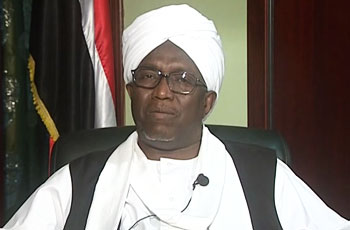
Hassabo Mohamed Abdelrahman
Khartoum will no doubt hold back the worst of the SAF attacks on the camps, but will continue to sanction militia attacks such as Radio Dabanga has regularly reported for years. Many of the fires reported in camps are also certainly the work of militia arsonists, although arson is a notoriously difficult crime to prove, especially without eyewitnesses or sophisticated forensic resources of a sort that simply don’t exist in any camp in Darfur. UNAMID has long proved completely hopeless in investigating camp fires (along with the massive sexual violence against African girls and women, a topic that Khartoum has declared off limits; see “Continuing Mass Rape of Girls in Darfur: The most heinous crime generates no international outrage” | January 2016 | http://wp.me/p45rOG-1QG/ ; Arabic translation of this report | http://wp.me/p45rOG-1Rr/].
Many tens of thousands of African girls and women have been the victims of sexual violence over the past fourteen years
Eventually, however, when it judges the moment auspicious—when further UNAMID deployments out of Darfur have been completed and U.S. sanctions have been fully and finally lifted—the Khartoum regime will unleash attacks that will be greater in scale and designed to complete the “dismantling” of the camps that Vice-President Hassabo Mohamed Abdelrahman spoke of.
And the fate of those displaced from their locations of tenuous security, and equally tenuous humanitarian relief? They will be abandoned in an environment marked by extraordinarily levels of ethnically-targeted violence, by the collapse of a humanitarian operation that depends on the fixity of camps for the provision of what is still grossly inadequate food, clean water, sanitation, and medical care. The camp populations—overwhelmingly, virtually entirely—are from the African tribal populations of Darfur, and they have seen their farmlands violently seized by militia forces, some from Chad, Niger, and Mali—Arab militia forces that Khartoum has paid in kind: military efforts in return for the land of displaced persons. There are constant reports of the violence that face African farmers who seek to cultivate or return to their lands; see | “Changing the Demography”: Violent Expropriation and Destruction of Farmlands in Darfur, November 2014 – November 2015″ | http://wp.me/p45rOG-1P4
The total absence of non-Sudanese news reporting on conditions in Darfur, Khartoum’s prohibiting of all meaningful human rights reporting, and the disappearance of UNAMID and its highly limited reporting capacity—all ensure that the international community will be able to avert its eyes at the most ghastly moment in fourteen years of genocidal counter-insurgency, Khartoum’s “final solution” to its “Darfur problem.”
